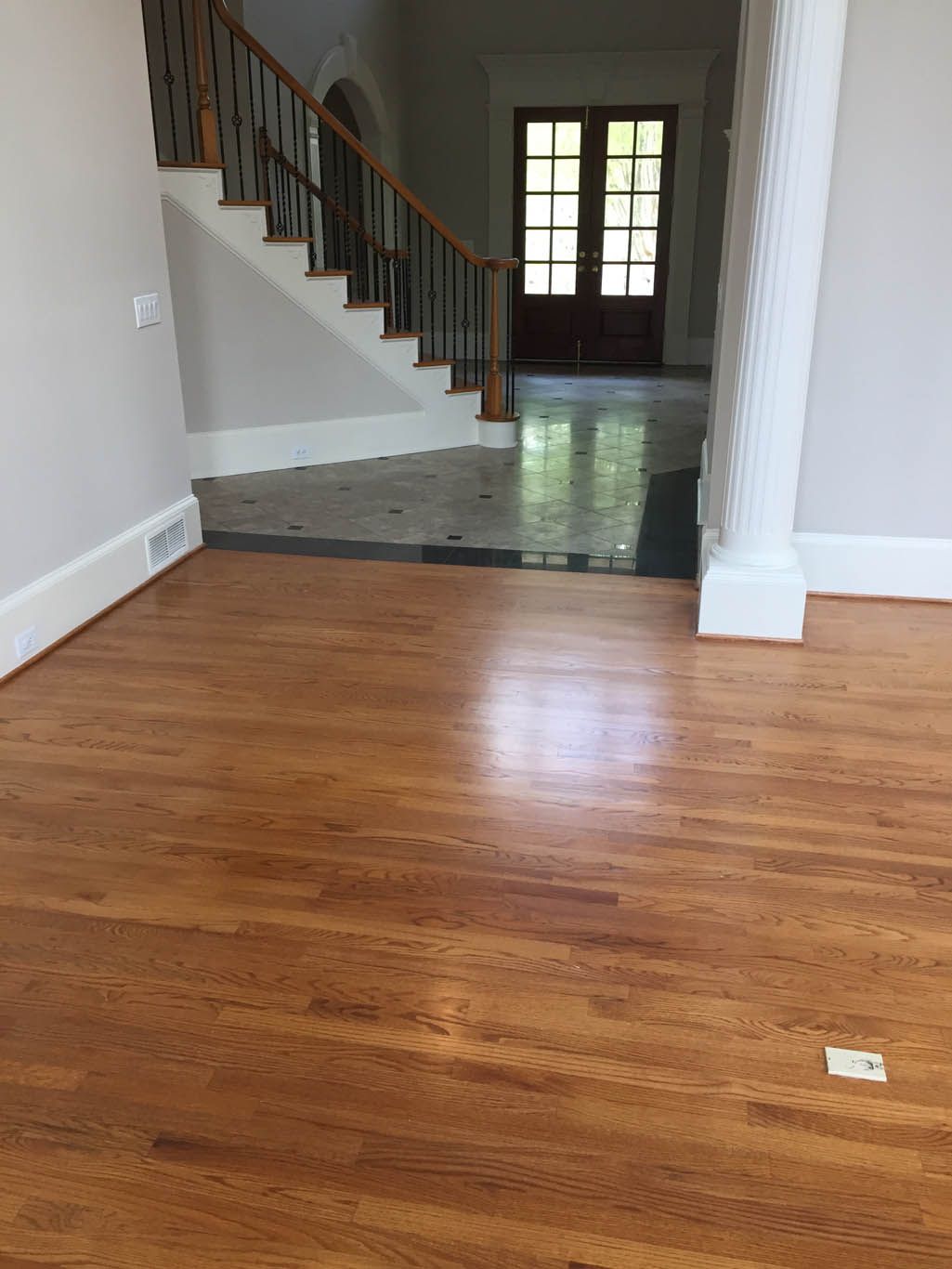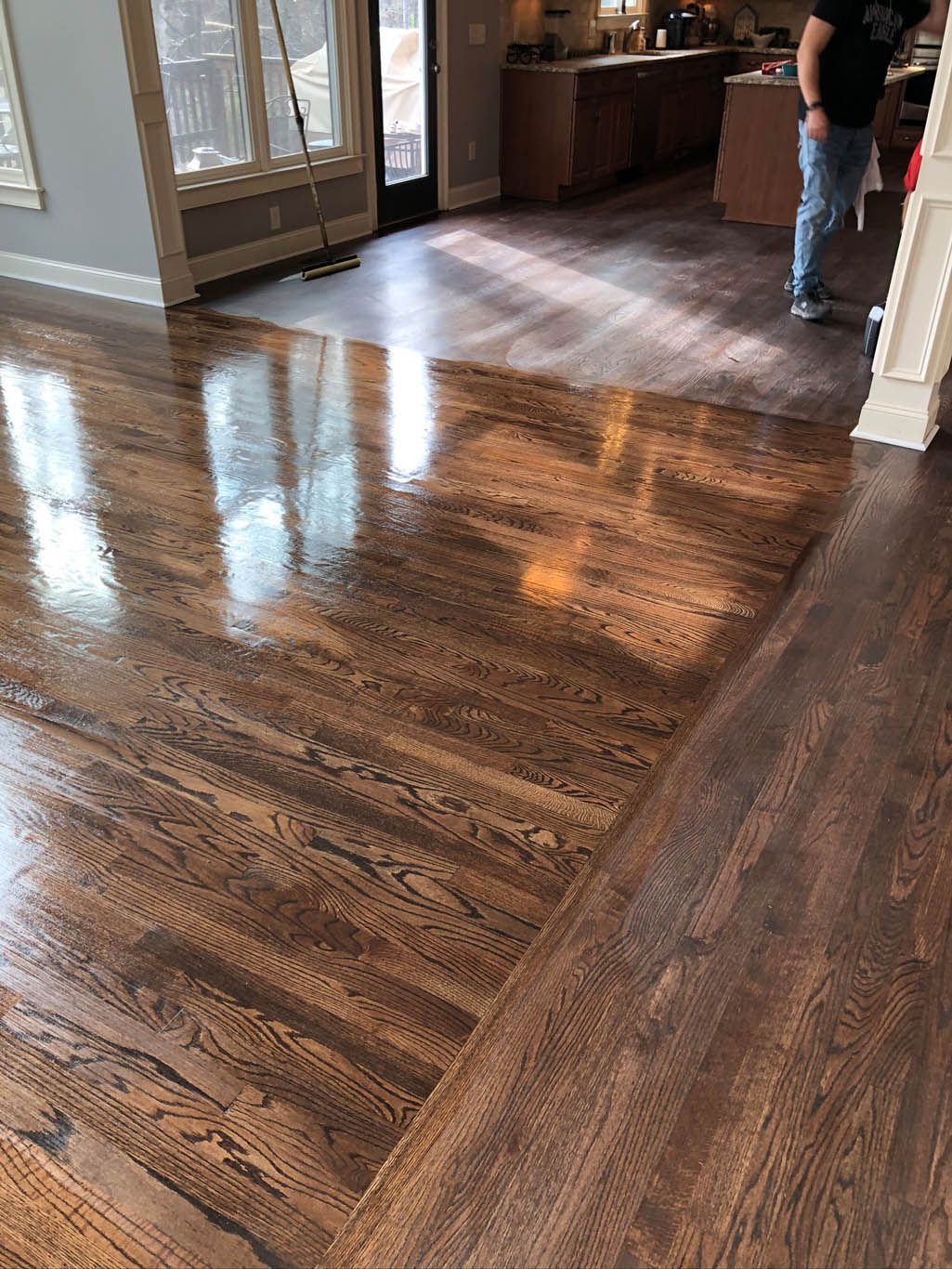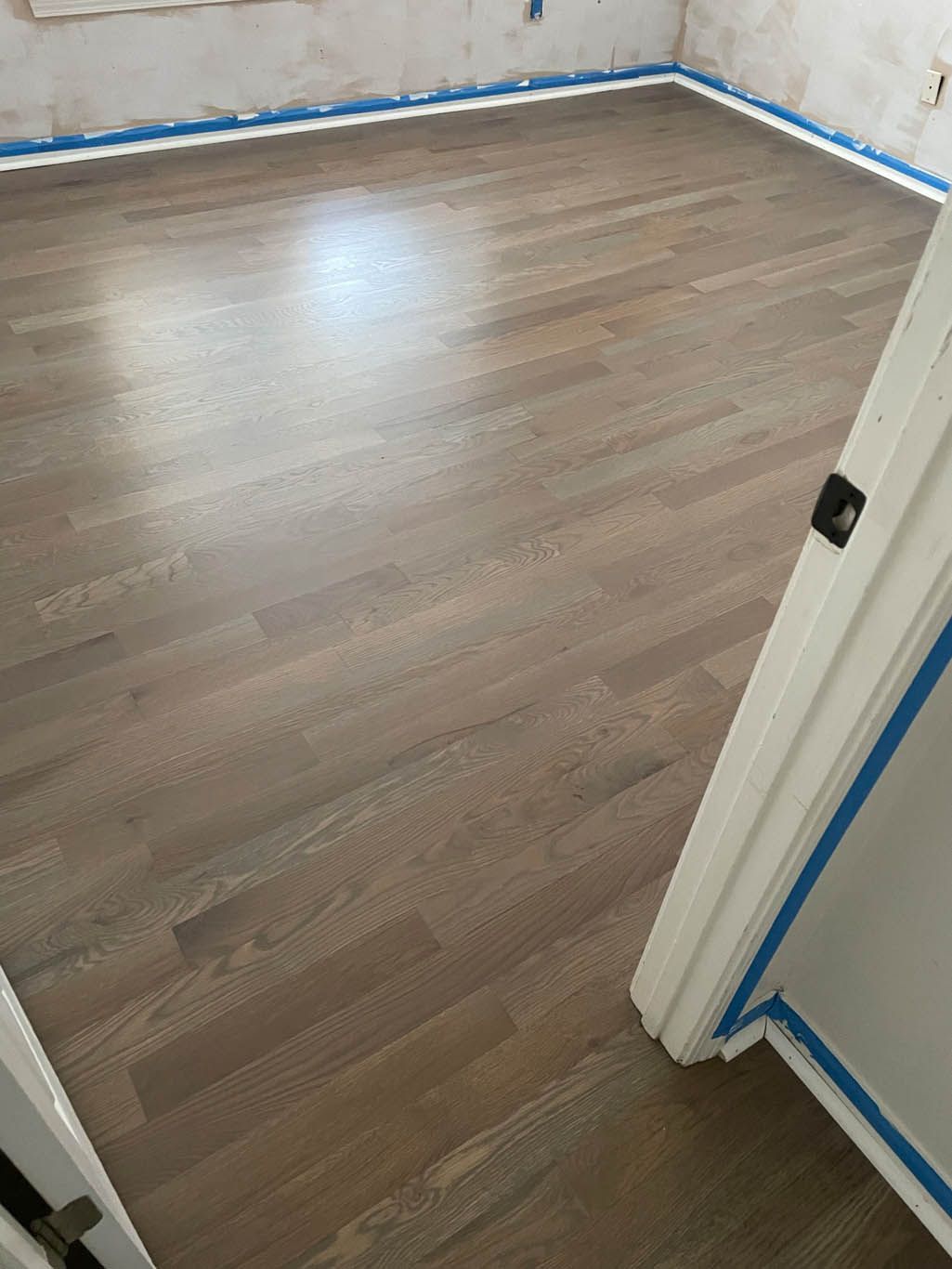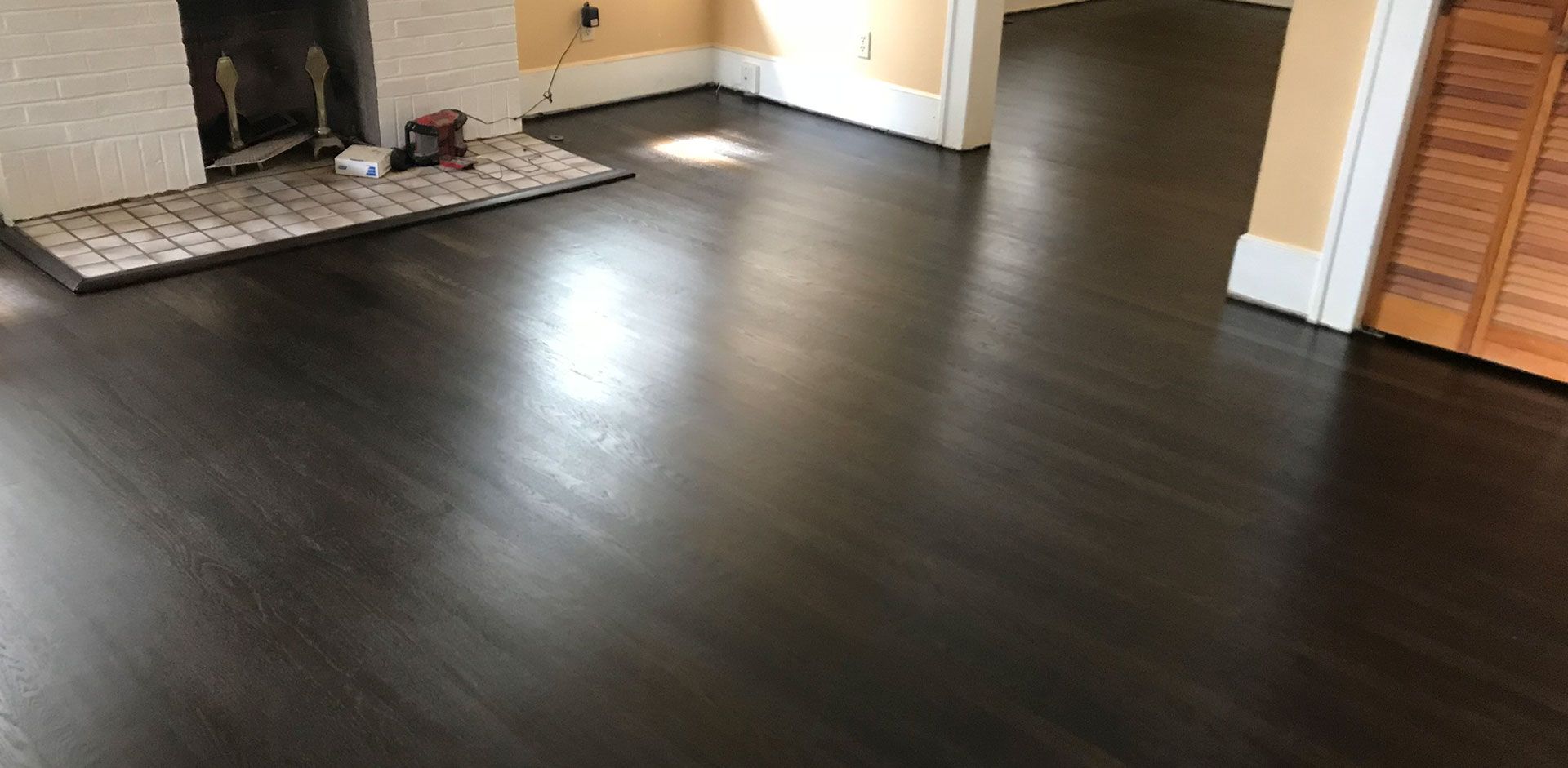FAQs
Got a question? We’re here to help.
-
What's the difference between solid and engineered wood flooring?
Solid wood flooring is made entirely of one piece of hardwood from top to bottom. It is typically 3/4 inch thick and can be sanded and refinished multiple times. Solid wood flooring can be installed over a wooden subfloor using nails or staples.
Engineered wood flooring, on the other hand, is made of a top layer of hardwood veneer glued to several layers of plywood or high-density fiberboard (HDF). This makes it more stable than solid wood flooring and less likely to warp or shrink due to changes in temperature and humidity. Engineered wood flooring is also typically thinner than solid wood flooring, ranging from 3/8 inch to 5/8 inch thick, and can be installed as a floating floor or glued down.
-
Which floor options are best for areas in the home that may be exposed to water or humidity?
For areas in the home that may be exposed to water or humidity, such as the bathroom, kitchen, or basement, it's best to choose flooring options that are water-resistant or waterproof. Some of the best flooring options for these areas include:
Engineered wood floors are better for higher humidity areas, and Luxury vinyl tile (LVT) or luxury vinyl plank (LVP): LVT and LVP are synthetic flooring options that are designed to mimic the look of natural materials like wood or stone. They are highly water-resistant and can be a more affordable option than some natural materials.
-
Can hardwood floors be installed in any room?
While hardwood floors can be a beautiful and durable flooring option, they may not be the best choice for every room in the home. Ultimately, the decision to install hardwood floors in a particular room will depend on a variety of factors, including the room's intended use, the subfloor, and the homeowner's design preferences.
-
How long will it take to install my new wood floors?
The time it takes to install new wood floors will depend on several factors, including the size of the space, the type of wood flooring being installed, the installation method, and any necessary preparations that need to be made before the installation can begin.
-
What payments do you take?
We accept ALL major credit cards, such as Visa, Mastercard, and American Express, as well as checks.
-
What kind of warranty do you offer?
We offer one year warranty on labor and materials provided.
-
Do you have flooring samples available?
We will bring samples to your home so you can see and touch the flooring samples in person. This can help you make an informed decision about your flooring options and ensure that you are choosing a material that meets your needs and preferences.
-
Will there be odors?
Using water-based finishes on wood floors is a popular choice among homeowners. These finishes have several advantages over oil-based finishes, including a faster drying time and lower levels of fumes, which can make the installation process more comfortable for everyone involved. Water-based finishes also tend to have a lower VOC (volatile organic compound) content, making them a more environmentally friendly option. Despite their lower VOC content, water-based finishes are still highly durable and can provide excellent protection against wear and tear. Overall, choosing a water-based finish for your wood floors can be a great option for those who are looking for a fast-drying, low-fume finish that provides lasting protection for their floors.
If you prefer an oil based finish we'll gladly use that.
-
Will it make a lot of dust ?
Dustless sanding is a process of refinishing hardwood floors that utilizes specialized equipment and techniques to significantly reduce the amount of dust and debris generated during the sanding process. By using a vacuum system that is attached to the sanding equipment, the dust is captured as it is created, preventing it from spreading throughout the home. This means that there is less dust for homeowners to clean up after the sanding process is complete. In addition to being a more convenient option for homeowners, dustless sanding can also be a healthier option, as it reduces the amount of dust that is released into the air and inhaled during the refinishing process. Overall, dustless sanding can be a great option for those who want to refinish their hardwood floors while minimizing the amount of dust and debris that is generated during the process.
-
How fast can I move back in?
If you are having your hardwood floors refinished, you may be concerned about the amount of time it will take to complete the project and how long you will need to be out of your home. However, with advances in flooring technology and refinishing techniques, it is often possible to have your floors refinished in as little as one day, allowing you to move back into your home quickly. This is typically accomplished through the use of fast-drying finishes and techniques that minimize the amount of time it takes for each coat of finish to dry.

RATINGS & REVIEWS
Let’s talk about your flooring project
We will get back to you as soon as possible.
Please try again later.
Floors Smart is a reputable and experienced company that has been delivering exceptional residential flooring installation services for 18 years, utilizing their expertise to offer a wide range of flooring options, superior customer service, and skilled craftsmanship to exceed their clients' expectations.
We've had the pleasure of working with many satisfied customers who appreciate our commitment to quality workmanship and exceptional customer service.
We are grateful for their support and look forward to continuing to provide top-quality flooring installation services for many years to come.
Services
Company
Contact
Business Hours
- Mon - Fri
- -
- Sat - Sun
- Closed

All Rights Reserved | Floors Smart





